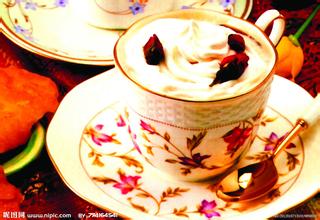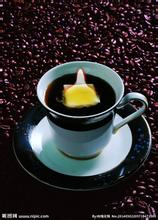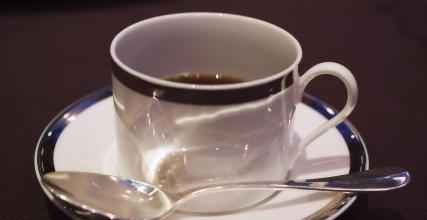Indonesian Java Coffee Flavor Taste Manor Production Features Java Fine Coffee Bean
When ships replaced sailboats, coffee produced on these islands faced the same problem as Indian coffee from Mysore-that is, consumers were so used to coffee affected by long trips that they were reluctant to accept the taste of this "fresh" coffee. To solve this problem, the Indonesian government tried to copy coffee affected by long-distance travel, storing coffee beans for up to a year. However, what is not satisfactory is that the taste of this wetted coffee is not so widely accepted that it affects the good reputation of its coffee.
However, Indonesia's "store" or "journey" coffee is still produced today. It is generally sold under the brands of "Old Government", "Old Brown" and "Old Java".
Although Indonesia produces so much admirable coffee, it is puzzling that local residents prefer Turkish coffee to its famous European coffee. Sumatra, the second largest island in the Indonesian archipelago, is the center of Indonesia's oil industry, and its rubber and wood are also famous exports. But the coffee in Sumatra is more eye-catching, similar to Java coffee, but with slightly heavier grains. Coffee beans from Mandheling and Ankola have also received a lot of attention, and the former is even known as the world's fullest coffee beans.
The island of Sulawesi, located between Brneo and New Guinea, is sometimes called Celebes. The coffee produced on the island is full of grains and rich in flavor. The best coffee beans come from Kalossi and Rantepao in the southern part of the island. Among the many brands, try Celebes Kalosi Coffee, which was introduced to Indonesia by the Dutch in the mid-17th century (some official sources believe it is earlier). The first batch of coffee from Java was sold to Amsterdam in 1712. However, coffee trees in all plantations were destroyed by coffee rust in 1877, and Robart coffee trees had to be introduced from Africa to replace the original species. Today, only 6% or 10% of coffee beans are Arabian coffee beans. Indonesia is the world's leading producer of Robbins coffee, producing 6.8 million bags of coffee a year, with more than half of the coffee coming from small plantations, accounting for about 90 per cent of the total production.
The best growing areas of the archipelago are in Java, Sumatra (Blawan), Sulawesi (Sulawesi) and Flores.
Java produces exquisite aromatic coffee with relatively low acidity, delicate taste and good balance. Java coffee has better aroma and acidity than coffee from Sumatra and Sulawesi. The best plantations in Java are Blawan, Jambit, Kayumas and Pankur. Java mocha is a mixture of Java and Yemeni mocha.

Important Notice :
前街咖啡 FrontStreet Coffee has moved to new addredd:
FrontStreet Coffee Address: 315,Donghua East Road,GuangZhou
Tel:020 38364473
- Prev

The unique and strong flavor of Costa Rican coffee introduces the characteristics of Costa Rican coffee manor producing area.
All the coffee trees planted in Costa Rica are Arabica coffee trees. through improvement, the quality of coffee beans is better and more stable. in order to facilitate picking, coffee trees are kept at a height of about 2 meters through continuous pruning. The coffee that people eat is the taste of the seeds in the fruit that are brewed in water. After picking raw coffee beans, the peel, pulp, seed film and sun exposure must be removed.
- Next

The taste of Guatemala Coffee Manor with elegant aroma introduces Guatemala Cafe.
Antigua Island (Antigua) is a famous producer of coffee. Rich volcanic soil, low humidity, strong sunlight and cool night winds are the characteristics of Antigua. Three spectacular active volcanoes ── Agua, Acatenango and Fuego form a beautiful valley. Fuego active volcano also adds misty dust from time to time. Every 3
Related
- Detailed explanation of Jadeite planting Land in Panamanian Jadeite Manor introduction to the grading system of Jadeite competitive bidding, Red bid, Green bid and Rose Summer
- Story of Coffee planting in Brenka region of Costa Rica Stonehenge Manor anaerobic heavy honey treatment of flavor mouth
- What's on the barrel of Blue Mountain Coffee beans?
- Can American coffee also pull flowers? How to use hot American style to pull out a good-looking pattern?
- Can you make a cold extract with coffee beans? What is the right proportion for cold-extracted coffee formula?
- Indonesian PWN Gold Mandrine Coffee Origin Features Flavor How to Chong? Mandolin coffee is American.
- A brief introduction to the flavor characteristics of Brazilian yellow bourbon coffee beans
- What is the effect of different water quality on the flavor of cold-extracted coffee? What kind of water is best for brewing coffee?
- Why do you think of Rose Summer whenever you mention Panamanian coffee?
- Introduction to the characteristics of authentic blue mountain coffee bean producing areas? What is the CIB Coffee Authority in Jamaica?

